Transforming lives
Gavin S Mckay, author of Transforming lives for 100 years, presents the first of two snapshots from the book published to celebrate the centenary of Dundee Dental Hospital and School
The centenaries of both Dundee Dental Hospital (1914-2014) and Dundee Dental School (1916-2016) have been celebrated recently with a civic reception, academically through a series of 10 public postgraduate lectures by Dundee Alumni and by the publication of a short history entitled Transforming lives for 100 years. This article provides a brief snapshot of the publication and covers the years from the founding of the hospital in 1914, through to the Second World War.
Overview
An outline of some of the achievement highlights in that history are listed as follows:
- The dental hospital provided public service dentistry facilities from 1914, by a not-for-profit private enterprise, which was more than just for emergency pain relief. The aim was to include tooth conservation and, in the longer term, dental health education through a programme of an annual inspection of children’s teeth. The dental surgeons gave their service without payment. The overheads were covered by charity and subscriptions.
- From 1916, a dental school was established within Dundee Dental Hospital becoming the first in Scotland to be governed by a university as part of one of its colleges – in this case, the University of St Andrews.
- By 1918, the first Scottish dental qualifications, certificated by a university, not a college of surgeons, were awarded to successful Dundee LDS candidates by the University of St Andrews.
- In 1930, a dental postgrad diploma (the DPD) was first instituted. This diploma, unique to Dundee Dental School, was sponsored jointly by the BDA and the University of St Andrews.
- In 1936, the first university dental degree in Scotland – the BDS – was awarded by the University of St Andrews.
- A local School/Public Dental Health Scheme was in place some 20 years before the NHS was established. These included pre-school dental clinics as well as the school inspections, dental health education and orthodontic advice/treatment for poor children.
- In 1941, the first dental PhD degree by thesis and research from the University of St Andrews was awarded.
- Dundee Dental Hospital and School has always achieved beyond its small size. The 10 public postgraduate lectures given as part of the centenary celebrations were all delivered by our alumni who are presently either deans of other British dental schools or presidents of dental postgraduate institutes. What is even more satisfying is that these 10 do not exhaust our list!
Prime movers
Dundee Dental Hospital evolved from its precursor, the Dundee Dental Dispensary (1908/9-1914) which in turn was formed by the members of Dundee Dental Club. The prime movers were a small group of highly motivated people of considerable character. They were Walter Campbell (the dental patriarch 1827-1919) plus a native Dundonian, William McPherson Fisher (the public dentistry advocate 1853-1938). Two of Walter Campbell’s sons, Graham and Gordon, both surgeon dentists, followed him into the profession and gave their time, energies and lives to serving the people of Dundee.
The Campbell dynasty was to mould the form of the Dundee Dental Club and shape the subsequent development of the Dundee Dental Hospital until 1948. The third initiator was J Bell Milne, a young dentist and incomer to Dundee. He became involved because he had found the established dentists in Dundee to be somewhat remote and difficult to get an introduction to. His solution was to contact Walter Campbell and suggest that the creation of a social dental professional group would help young dentists feel more included. The result was the formation of Dundee Dental Club.
Milne, an Irishman who had obtained his LDS in Edinburgh, was not really a shy young dentist feeling left out of the social circle in Dundee. He seems to have been a bit of a party animal and an athlete (high jump) of note. His party trick was to wear a top hat which gave him a height of about six feet. Friends would hold a lightweight pole at hat height and Milne would remove the hat, then jump over the bar – or so the story goes. There is an authentic record that he could jump over six feet using a modified scissors jump.
Walter Campbell was recognised as having been one of the most prominent and organisationally active dentists in Scotland. Campbell was one of only three Scots, in a group of about 27 senior UK dental surgeons, whose meetings formed the precursor of the BDA. He had attempted to set up a Dental Dispensary in Dundee in the 1858/59, many years before the 1909 successful one. That first attempt failed due to lack of sufficient professional interest, but a parallel attempt by Campbell, through friends and colleagues in Edinburgh, was a great success and gave rise to the Edinburgh Dental Hospital some 27 years before the Dundee Dental Hospital was established.
Walter Campbell was 82 years old when the dental hospital was finally established and it was his son, particularly his eldest Graham, who drove this process and became the first clinical lead in charge of the dispensary and then the hospital.
William McPherson Fisher (1853-1938) was the eldest son of John Fisher and Jane McPherson, born in Dundee on 18 January 1853. There were 13 other younger siblings, 10 of whom survived beyond infancy. His father was a hairdresser, although probably not a barber dentist, who went on to become a bookseller and stationer. The family hairdressing business was at 37 Perth Road and remained in the family for three generations, with each new proprietor being a John Fisher.
On leaving school, young William probably served a general dental apprenticeship at a hospital in Carlisle before going on to the Dental Hospital of London (which became the Royal Dental) for LDS training. In 1875, he was a member of the student society where his academic tendencies first began to show. His initial paper was given as a student; the subject was “Voice and Speech”. In this he was developing the views of TH Huxley (Darwin’s Bulldog).
He qualified LDS RCS in 1878 and was entered in the first Dentists Register. In 1878, Fisher returned to Dundee to set up his own dental practice. That same year he married Isabella Young. By 1884 they lived in West Newport, Fife, an upmarket area with an hourly ferry service to Dundee. The Fishers had four children, the eldest and youngest were boys. Although William Fisher had a huge impact on the development of a National School Dental Service, he could be irrationally argumentative and was somewhat introspective. The death of John, the eldest son in the Boer War, made him withdrawn and reclusive.
In 1885, Fisher published a paper, in the then equivalent of the British Dental Journal, entitled Compulsory Attention to the Teeth of Schoolchildren which was based on an extended clinical study. What the published paper did was to define the role of the school dentist, as it would become once the NHS appeared more than 60 years in the future. Where his drive and commitment to dentistry for children came from, and why he moved away from natural philosophy, is not clear. The outcome was that, in 1890, the BDA set up a seven-year long survey of the dental status of 12,000 schoolchildren in sites all over the country, including the Mars Training Ship in the Tay. The investigating committee of the BDA produced annual reports for the duration of the study. William Fisher was a member of the investigating committee for the first year of the study and personally surveyed more than three schools.
In that first year it became blatantly obvious that the dental health of British children was so horrendously bad that it would require a herculean effort to improve it. Fisher withdrew from the subsequent years of the study because he thought that the solution to the problem was to devote all available manpower to treating the children. He believed that the collection
of data and its statistical analysis, rather than instituting urgent treatment for all the children, set the wrong priorities.
As a result, he had fierce arguments with those who appeared to derive academic satisfaction from data analysis but did not seem to be driven to want to help the children. He began to isolate himself from these debates. When his son John died in the Boer War (1899-1902), Fisher withdrew further from public and even from family life.
It seems that the formation of Dundee Dental Club, the Dental Dispensary and then the Dundee Dental Hospital, where altruistic dental practitioners provided treatment for the poor and needy without monetary gain, excited the interest WM Fisher. In fact, he became one of the prime movers of the Dental Club and subsequently, through the dental hospital, organised a local School Dental Service, based in Dundee, many years before any national scheme was implemented. Fisher was awarded a state pension in recognition of public service work.
In 1934, Graham Campbell (first dental hospital dean) was president of the BDA, whose annual meeting was also in Dundee that year. In his presidential address, at which a frail 81-year-old William Fisher was present, Dean Campbell spoke of his pride in the achievements of WM Fisher, noting that such a valuable contribution to the health of a nation would, in almost any other country, have merited at least a statue, located in a square bearing his name, in his home city.
The hospital
The initial hospital was a four-room flat, open for one hour a day, five days a week. One room was a two-chair clinic for routine treatments, a second room was for extractions under general anaesthesia. The third room was the surgeons dressing-room and the fourth was the waiting room.
Although the new hospital was not busy from the outset, within the first six months some 486 patients had been seen in the 125 hours that the clinic had been open. Add to this the fact that the First World War had started and that all soldiers had to be made dentally fit before going to fight, then the clinic became very busy.
The 1915 patient throughput was 1,741 in a clinic that was open for one hour on 250 days per year. This highlights the common thread that runs through the whole history – there was never sufficient space to accommodate all the clinical needs. By 1916 the patient throughput was 2,781 and there was a desperate need for a larger hospital.
The business men
From the outset until the NHS was established (34 years), Dundee Dental Hospital was a self-sustaining charity that was always short of funds. Two particular businessmen among a larger group of supporters came in succession to lead the Board of Management of the Dental Hospital; through hard work and personal cash injections kept the enterprise solvent. The first of these was William Rettie, chairman of William Low and Co., who had been chairman of the board of the Dundee Dispensary from 1909 and of the hospital from 1914. He bought a large villa (1916/17) next to the existing, four-room hospital, converted it into a modern dental hospital and gifted the whole to the board of Dundee Dental Hospital in 1918. The new hospital was a memorial to his son, Lieutenant Philip Rettie, killed in the Battle of the Somme (1916).
WM Rettie died in 1922 and was replaced by William Boyd, past chairman of Jas Keiller and Son Ltd who made many gifts to the hospital and school but the most significant was his endowment (1938/39) of the Boyd Chair of Dental Surgery, in St Andrews University, creating the first clinical dental professor in Scotland.
- H Gordon Campbell, second dean and first Boyd Professor of Dental Surgery, by James McIntosh Patrick, 1939. Shown by courtesy of the University of Dundee Museum Services; ARTS_171
- Waiting hall in 1954 – a large, oak panelled room with more artwork on display, including portraits of former Deans and a bronze bust by Benno Schotz. This room also featured a large, heated aquarium as well as the usual magazines. Shown by courtesy of the University of Dundee Archive Services; ACC 2015-708 (4)
- WM McPherson Fisher, by an unknown artist and of questionable quality, showing the older man (c1930-34)
- Aylwin Drakeford –third dean of dentistry and second incumbent of the Boyd Chair (1947-1977). Shown courtesy of the University of Dundee Museum Services; ARTS_174
- W Graham Campbell, the first dean of dentistry and president of the BDA in 1934, by Leslie Gordon Kinnear, 1934. Shown by courtesy of the University of Dundee Museum Services; ARTS_170
- A bronze bust of William Boyd by Benno Schotz. Shown by courtesy of the University of Dundee Museum Services; ARTS_175
Hospital growth
By 1919, 2,464 patient visits were recorded. However, because of the heavy usage, it was deemed necessary to renovate the nearly new hospital, to increase the number of dental chairs and create more clinical space. All these growing numbers of treatments increased the running costs so that, by 1920, the hospital accounts were in deficit. Although the dental surgeons worked without payment, the dental materials used were expensive and ancillary staff had to be paid.
Just to compound the problems of the hospital, the UK Government (now 1919 and post war) had introduced a scheme whereby it guaranteed financial assistance to any ex-serviceman who wanted to enter a profession, including dentistry. Being a government directive, the dental school was powerless to refuse them. In 1920, there were 32 ex-servicemen who enrolled, all with government help. Prior to this intake bombshell, the school had also offered places to 14 civilian students, four of whom were female. In order to cope with these 46 new students in first year of the LDS and a proposed extension of the course to four years, the school was again upgraded. There were now 17 operating chairs. Opening times were more than doubled, from five to 11 hours per week.
By 1921 there were some huge clinical problems. The mammoth 1920 intake were starting the clinical part of the course and, although there had been a significant drop-out at the end of first year, there were still more clinical students than could be easily accommodated. The 1921 Dental Act required that: “Only appropriately trained senior clinical students could operate on a patient and then only when under the direct supervision of a qualified dental instructor.” There were too few staff to directly supervise all the clinical students and also treat patients. With the extended opening hours, patient attendances increased to 5,641, the cost of materials used also grew, as did the deficit.
The 1921 annual report of the Board of Management of the Dental Hospital states that the above high number of treatments was only possible due to competent senior students being able to provide the necessary treatments (implied – without proper supervision). Such was the shortage of space that, despite the ongoing renovations, staff and clinical students were competing for the available 17 chairs.
Once the Dental Act (1921) was fully embedded, the dental hospital and school had to restrict its student intake to that small number that could be properly supervised in the clinics. Since student fees were a significant part of the income of the institution, the money problems did not improve.
The hospital continued to provide a major service to the community and to transform lives. The public appreciated the value of the dental hospital and patient attendances continued to grow – so did the deficit.
The period 1926/7 was a pivotal time because the deficit had reached 30 per cent of the income. This figure was regarded as requiring fairly urgent attention. The same problem existed in 1925 but that year the student ‘flag day’ raised £500 – enough to buy a small house then – which kept the hospital solvent. In 1927, chairman of the board William Boyd made a national public service broadcast, using the BBC, to solicit financial support for his good cause; the Dundee Dental Hospital and School – but with no response.
William Boyd was already treating the dental hospital as his special responsibility and personally paid for some items needed by the hospital. A number of sources have suggested that after this crisis point he instructed that requests for certain payments be directed to him personally at his private address. It is certainly true that William Boyd attended the hospital almost every day, like a clerk of works, and did his best to prevent problems from arising.
In 1929, the University of St Andrews assumed responsibility for all the staff, including the clinicians, of the Dundee Dental School. This was in preparation for the next major academic announcement.
This was that a diploma in public dentistry would be established in 1930, at the request of the BDA, closely following the course content defined by them. This was the first postgraduate dental diploma in the UK, only possible thanks to another hospital expansion. This time a room was created in the back garden of the hospital.
By 1934, further major hospital expansion was being opened. The earlier expansions had only just reduced the problem. This time, the solution was for a second phase garden extension and some serious remodelling within the house. A conservation room with eight chairs was inserted on the first floor and the caretakers flat within the basement was modified to accommodate student training.
This was to be a pivotal year as it was a time of financial depression. In this year, the dean of dentistry, Dr Graham Campbell, was the president of the BDA, thus very much in the national eye and that probably did help generate more grant aid. However, funds were so limited that Mrs Campbell formed a Ladies’ Committee that set about generating funds and seeking sponsored support. However, prior to being dean of dentistry, Graham Campbell had had a patient called Lady Elizabeth Bowes-Lyon, now the Duchess of York. He knew her sufficiently well to be able to invite her to open the extended dental hospital.
Not only did she agree to perform the formal opening ceremony but was sufficiently interested to offer more assistance and became the Royal Patron of Dundee Dental Hospital. This is an association which would have attracted many more financial sponsors. The same lady, 34 years later and now the Queen Mother, opened the new Dental Tower in her capacity as Chancellor of the University of Dundee.
The batchelor of dental surgery degree (BDS) was introduced in the session 1936/7. It was an academic year of full time study and practical experience entered into after successfully completing the LDS hurdle. The extension and alterations noted above were in part to allow for this extra year of students. A Master of Dental Surgery degree was also introduced and defined as requiring a BDS qualification to which was added an advanced clinical element, and a thesis.
The Boyd Chair of Dental Surgery
Dr Graham Campbell, the first dean of the dental hospital, retired as dean in 1938 (but continued to teach until 1947) and was succeeded by his younger brother Gordon. By 1939, thanks to an endowment by William Boyd, the first chair in dental surgery in Scotland was created in the University of St Andrews; to be called the Boyd Chair.
Professor Gordon Campbell became the first incumbent. Boyd raised the monies to sponsor the chair by selling one of his three Van Gogh paintings.
Fine art works in the dental hospital and school
William Boyd was a knowledgeable collector and sponsor of artists. Throughout his association with the hospital, Boyd made gifts of fine art to individuals, on the understanding that the paintings, sculpture and stained glass remained on display in the hospital to calm and educate the patients. In 1939, he was awarded an honorary LLD by St Andrews in recognition of his support for the Dental Hospital and School. He died in 1941.
William Rettie who donated the first dental hospital had a large stained glass memorial window fitted in the stairwell of the hospital.
The second holder of the Boyd Chair
Professor Gordon Campbell retired in 1947, after the Second World War had ended and was succeeded as the Boyd Professor by Aylwin Drakeford Hitchin. Running the dental hospital and school through two world wars and the depression between the wars, took its toll on both the Campbell boys – Graham died in 1948 (84 years) and Gordon in 1950 (80 years) so neither enjoyed a significant retirement.
The NHS was established in 1948 and thereby saved the dental hospital from failing due to lack of space and insufficient funds.
The second part of this short serialisation will give an account of Dundee Dental Hospital and School during the Second World War and into the modern era and appear in the September/October issue of the magazine.
more info
If you are interested in buying a copy of Transforming lives for 100 years, published by Connect Publications, there are still a few copies available. To buy your copy, priced at just £10, visit bit.ly/DundeeCentenary
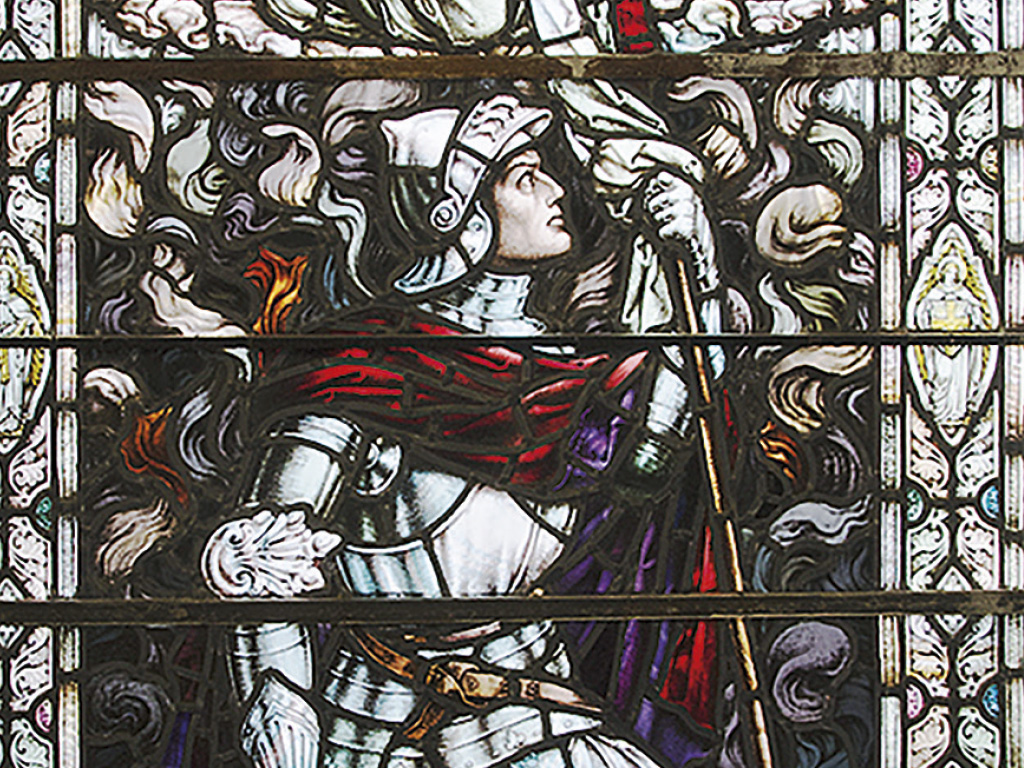
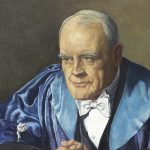
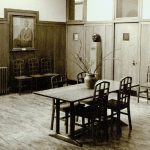
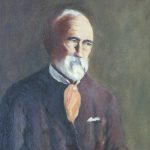
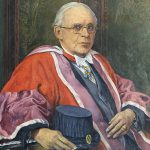
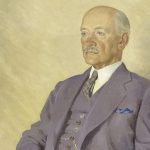
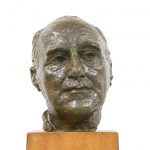
Comments are closed here.